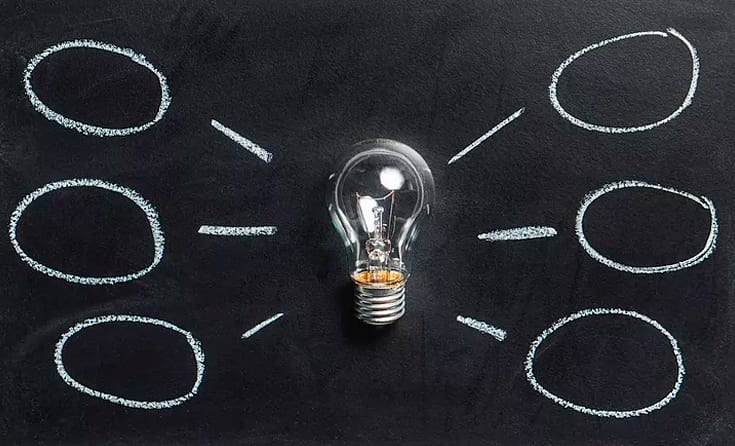
How the mind maps reality – Part 3: Internal Representations
How does the mind understand reality and make sense of it?
(3rd of a series)
Jean Baudrillard, a postmodern philosopher, once said that we live in an age where the image of a thing has replaced the item itself.
He calls this age “the age of the hyper-real,” where “real” doesn’t necessarily describe the reality that’s outside, but instead, an image of it. This development in the way individuals see reality is more than likely an evolution of our all-natural mental processes.
Today’s blog is a special one because we’re going to go over these mental processes to get to the heart of exactly how our brains make sense of reality. In other words, what is true to us. In fact, it is really a dangerous thing for anyone to believe that his or her idea of truth or reality is the only thing that there is. This type of belief could hinder a person from achieving their goals and being successful in different areas of life.
We now recognize that the mind is responsible for choosing and analyzing sensory input and information that would be helpful to us. Our minds can do this because of a natural filtering system called the RAS or reticular activating system.
What’s the job of RAS?
The RAS is a special system that stops mundane or worthless details from being absorbed and encoded by the mind. We are bombarded by countless sensory inputs on a daily basis so the RAS has to stop many of this info from entering our mind.
If we didn’t have a RAS in place, we wouldn’t be able to make any sense of what’s going on in the world around us.
There would be inescapable mental turmoil and disorder every day because of the large volume of information coming to us through our senses. Before our mind focuses on a piece of information, it has to satisfy at least one of these conditions:
1. Survival Value — Sensory input has something to do with your survival.
Here are some examples: unexpected flashing light while driving, constant beeping while going across the roadway, abrupt activity at either side of the roadway while driving fast, smelling smoke while you are asleep, weird noises outside your door in the dead of the night, sudden temperature change in your environment.
2. Newness or Novelty– Our brain has an exceptional capacity to keep in mind the look and position of things that we typically experience or use. When something is wrong or if something changed, we grab that information rapidly. Think about it, if you were doing your daily activities and something is out of place you spot the change immediately.
Here are some examples of Newness or Novelty: missing keys from a rack, picture frame moved or skewed on the wall, misaligned patterns on brand-new wallpaper, spots on a recently repainted area, your computer suddenly slowing down and difficulty in pressing an auto’s pedal.
3. Mentally Loaded Content– We have the tendency to grab sensory input that has something to do with people or things that matter deeply to us, like the crying of an infant at night or the smell of our favorite childhood meal.
How does your mind create these maps of reality?
Every mental process that we’ve talked about in this series has something to do with our brain’s natural “map-making” capability.
Our brains are equipped with a unique method of encoding and remembering our past experiences and the things we’ve learned. It creates a dynamic picture called “Internal Representations” to help us keep in mind our past experiences and be able to analyze them.
Each person’s internal representations or IR’s is unique to that individual since it was created in his/her mind.
What makes each person’s map of reality special and one of a kind?
Here’s how. What happens is that an External Event that comes in from the outside and it goes into our head and we filter that information in some way and the filters do the process of Deleting, Distorting and Generalizing the information that has come in. And the filters are:
Our experience of:
- Time/Space/Matter and Energy
- Our Language, the language that we speak and those of you who are multi-lingual know – that -when you’re thinking in your different language – that the world is a different place.
- Our Memories and Decisions – those also filter our external experience
- And Meta Programs and Values & Beliefs and Attitudes.
So our filters delete, distort and generalize our experience and then that experience comes inside and we make an Internal Representation of it.
Remember the old adage about “seeing the world through rose-colored lenses?” This image fits the idea mental filters perfectly: each person has “lenses” that slightly change how they see reality. Reality is separate/external from us – we can only understand it through our “estimations” or internal representations.
So, what we see as reality is not reality itself, but how we picture it to be.
How can we analyze our filters?
The path to success depends on our ability to analyze feedback from our experiences and interactions with others. This way, we can adjust how we see the world and other people.For example, if you don’t like the idea of playing sports because “sporting activities are stressful to you,” testing this perspective or internal representation may help you recognize that sports are actually great for your body because they shed calories and eliminate stress and anxiety. Understanding another person’s internal representations can also help you persuade and influence others more successfully. For instance, if you are in sales and you are having difficulty selling a product to a customer that seems to be ready to buy, diving right into the customer’s idea of a “good product” might help you determine what to offer so that he would finally make a purchase.
Make it a great day!
Did This Help You? If so, I would greatly appreciate it if you commented below and shared on Facebook.

